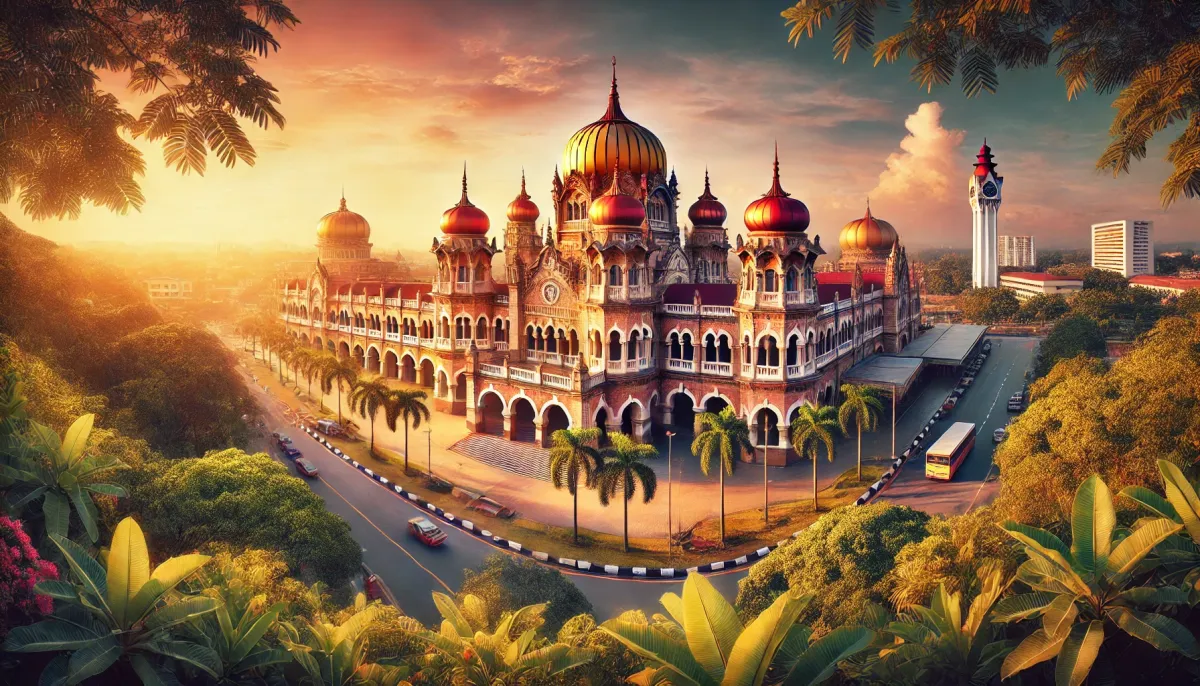Hey everyone, Mark here, your friendly neighborhood backpacker! I've just returned from an incredible trip through Malaysia, and I'm bursting to share my adventures. This trip focused on uncovering some less-traveled corners of the country, specifically Ipoh, Eighteen-Ding, and some amazing cultural sights. Get ready to be inspired to add Malaysia to your travel bucket list!
Ipoh: A Blend of History and Culture
Ipoh, the capital of Perak, immediately captivated me. The city boasts a rich history, seamlessly blending British colonial architecture with vibrant Malaysian culture. My journey began at the iconic Ipoh Railway Station, a stunning example of Moorish and Victorian styles built between 1914 and 1917. It's often called "Ipoh's Taj Mahal," a testament to its grandeur. The station beautifully preserves various locomotives and carriages from Ipoh's pioneering days, a must-see for any history buff!
What struck me most was the strong Chinese influence in Ipoh, much like Penang. However, while Penang is predominantly Hokkien Chinese, Ipoh’s large Chinese population is primarily Cantonese. This historical migration has resulted in a fascinating cultural blend, and, incredibly, you can get by speaking Mandarin in many places throughout the region. This is because this area was part of British Malaya. Perak, one of Malaysia’s thirteen states and the second-largest in Peninsular Malaysia, experienced significant tin mining during the 19th century, drawing British colonists and shaping its unique architectural landscape.
| City | Predominant Chinese Group | Significance |
|---|---|---|
| Penang | Hokkien | Early Chinese settlement in Malaya |
| Ipoh | Cantonese | Tin mining boom, significant British influence |
| Kuala Lumpur | Diverse groups | Diverse population, modern capital city |
Understanding Malaysia's Chinese Diaspora
Malaysia's rich history is inextricably linked to its large Chinese population, which constitutes about 30% of the overall population. Learning about this immigration history is key to understanding the country's unique cultural tapestry. Starting in the 16th century, millions of Chinese, primarily from Fujian and Guangdong provinces, migrated to Malaya seeking better economic opportunities. They escaped poverty and hardship in China, a situation not unique to that era. Many countries, even Switzerland, which we now see as idyllic, have faced periods of economic struggle.
These migrants settled in major cities like Kuala Lumpur, Georgetown (Penang), Ipoh, Johor Bahru, Kuching, Kota Kinabalu, and Melaka, profoundly impacting the culinary and cultural landscape. This immigration explains the prevalence of Mandarin in certain areas.
Ipoh's Culinary Delights: From Gai Si Hor Fun to Famous Pomelos
Speaking of culinary influence, Ipoh's food scene is phenomenal! I had to try the famous Ipoh Gai Si Hor Fun (chicken shredded noodle soup). What started as a simple dish in the 1950s and 60s, evolved into something truly unique. The addition of locally grown bean sprouts (taugeh), stir-fried with chicken oil, soy sauce, and pepper, elevated the dish.
The evolution of Ipoh food is fascinating. Over time, bean sprouts and poached chicken became the stars, eventually leading to the creation of Taugeh Chicken, a dish I thoroughly enjoyed. It’s often served with pork and fish balls and can even replace noodles with Hainanese chicken rice!
And let's not forget the giant pomelos at Ipoh's "Shi Shi" Street (literally translated to "Xi Shi" Street). These are enormous, juicy, and exceptionally sweet—some of the best I've ever tasted! It was an amazing experience!
Eighteen-Ding: Where History Meets Sustainability
My adventure took me next to Eighteen-Ding, a small coastal town renowned for its charcoal kilns and meticulously managed mangrove forests. The name "Eighteen Ding" itself has fascinating origins—some believe it refers to the 18 men who initially settled the area, while others point to the 18 lamps that once illuminated the town.
The charcoal kilns, operating for over a century, utilize sustainably managed mangrove wood to produce high-quality charcoal primarily exported to Japan and Europe. The Japanese, during their occupation, introduced the concept of sustainable forestry, resulting in a remarkable mangrove ecosystem that continues to thrive today. They implemented a system of planting a new tree for every one harvested, ensuring a continuous supply of raw materials. This balance between economic activity and environmental preservation is truly remarkable.
The Merang Mangrove Reserve: A Breathtaking Ecosystem
The Merang Mangrove Reserve, spanning over 400 square kilometers, is the largest mangrove forest in Peninsular Malaysia and boasts incredibly well-managed conservation efforts. Its vast ecosystem supports the charcoal industry and is teeming with wildlife. I took a walk along the 1.2km wooden boardwalk, getting up close and personal with proboscis monkeys and various bird species. It's an amazing place to explore!
Orangutans and Malaysian Villages
My Malaysian journey concluded with a visit to the Bukit Merah Orangutan Island Foundation, a sanctuary dedicated to rescuing and rehabilitating orangutans. These incredible creatures, Malaysia's national treasure, are a sight to behold. Witnessing their rescue, rehabilitation, and eventual release back into the wild was a humbling experience.
I also visited traditional Malay villages, discovering architectural styles adapted to the tropical climate, with raised houses and sloped roofs to protect against the heat and rain.







